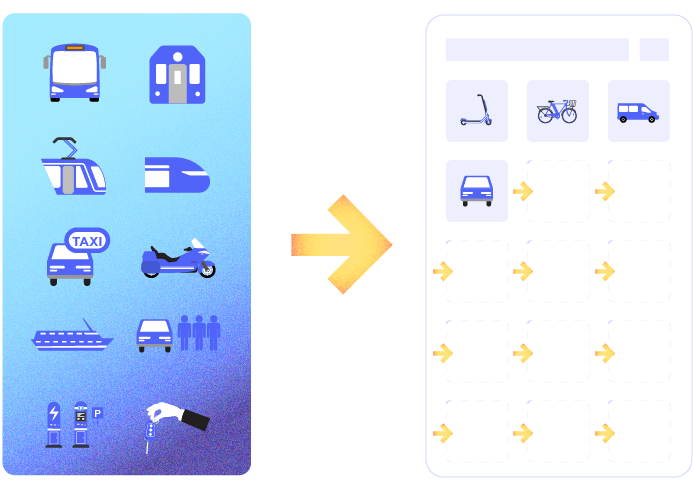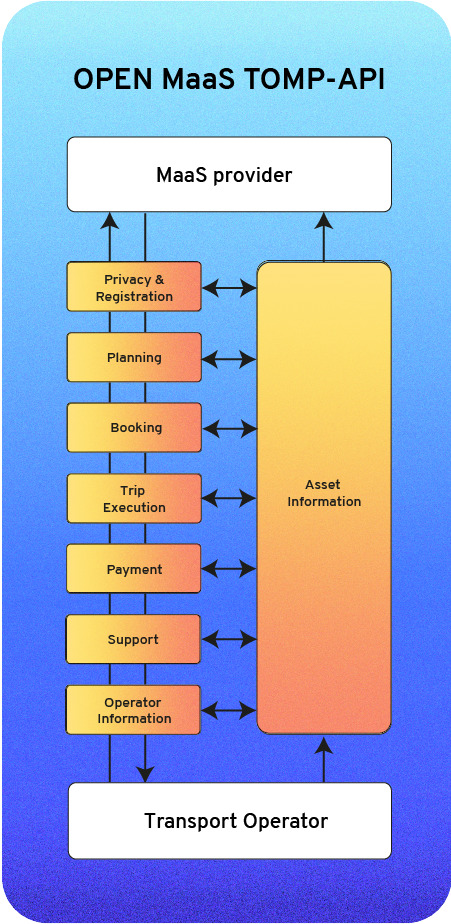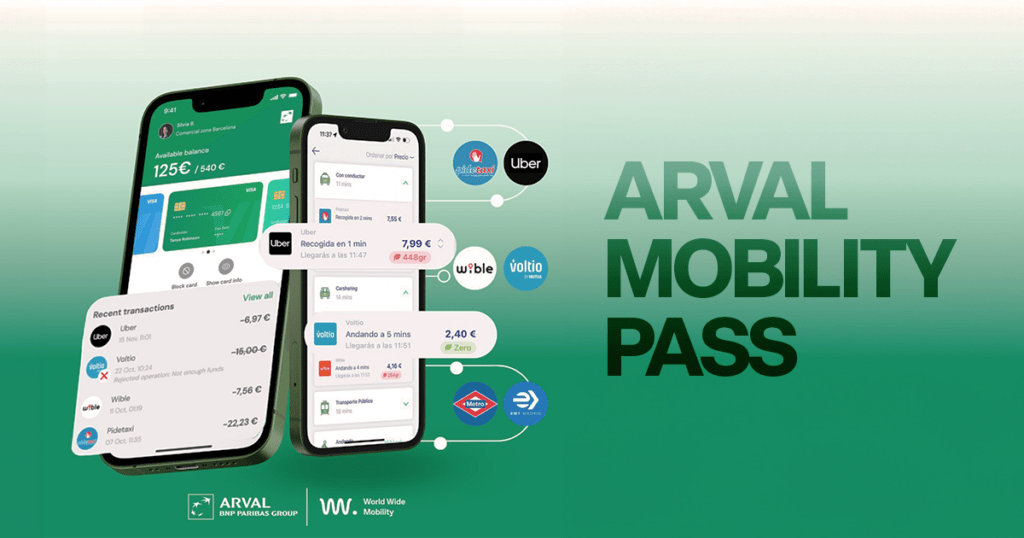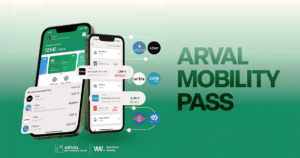“Effortless mobility for everyone”. This is the vision of the TOMP working group, formed by public and private actors. Its goal: to provide a standardized digital interface for MaaS service providers and transport operators. And this, through an open-source API, available on GitHub. As we are involved in its development alongside some 40 mobility players, we thought it would be interesting to devote an article presenting the objective and prospects of TOMP-API.
Speaking the same language
For a successful MaaS solution, it is essential to facilitate the sharing and exchange of data between transport operators and MaaS providers. From trip planning to booking and payment, the user expects a seamless experience. And that includes consolidating data from a multitude of transport operators. It is essential to establish a standardized communication protocol. Both at the national and international levels. And this is where TOMP-API makes sense.
Acronym for Transport Operator to MaaS Provider – Application Programming Interface, TOMP-API is deployed following the launch of 7 MaaS pilot solutions by the Dutch Ministry of Infrastructure and Water Management. Currently based on the General Bikeshare Feed Specification (GBFS), this standardized data format was launched in 2015 by NABSA (North American Bikeshare Association). Adopted by more than 600 bike and scooter sharing services worldwide, it is mainly used to schedule trips and share the real-time status of shared vehicles.

This is not to be confused with the MDS (Mobility Data Specification). A set of APIs used mostly for non-public purposes, to facilitate data exchange between cities and micromobility and car-sharing services. In the context of the establishment of new regulations.
Improving interoperability with TOMP-API
With this standardization, it will be easier for transport operators to connect their data to different MaaS applications. Or even to transform themselves into a MaaS solution. For example, it is the case of public transport. In detail, TOMP-API includes operators as all passenger transport services like cabs, trains, micromobility services, carpooling, car sharing. But also, mobility infrastructures such as on-street or private parking lots.

A solution that saves time for MaaS providers, in particular at the technical level. Instead of connecting to each operator’s API, they can now simply use TOMP-API. Moreover, from a financial point of view, it allows reducing the entry ticket to new players.
A workflow of 8 functional modules
In order to ensure the most complete MaaS experience, the latest version of TOMP-API 1.1.0 (Libellule) is composed of eight functional blocks. Namely:

Operator information
This first module corresponds to all the static GBFS data streams concerning the operator. This includes the price of its services, the regions where it operates, the stations served, alerts and sales conditions.
Planning
This second module is where the user wants to know the different options available to them. It includes many (semi-)static data. Such as availability, geolocation, estimated travel time or costs. However, it is possible of skipping this step if the user doesn’t want to plan a route. On TOMP-API, we talk about “pick up and go”.
Booking
This is the moment when the user will make a choice among the different options suggested by the MaaS provider. A reservation goes through different stages, from checking availability in real-time. To finish, at the level of the operator, with the confirmation or the cancellation of the order.
Trip execution
Divided into 4 parts, this module includes the preparation, the beginning, during and the end of the trip. A final step usually includes a complete summary of the trip, with the possibility to leave a review or a comment.
Payment
Be careful, this module should not be confused with ticketing. Indeed, it is only limited to payment and billing. Based on two payment models: the prepayment, with for example the subscription. And the post-payment, with the payment of the journey, the reimbursement or penalties.
Support
This optional module, added since version TOMP-API 0.5.0, refers to the technical assistance. This can be done during any of the blocks listed below. In case of a problem, third party systems can be used to remedy it.
Asset Information
In addition to the other modules, this block is used to provide additional information. In particular, on the level of the equipment (vehicle) or the infrastructure.
Privacy & Registration
Last but certainly Indispensable in any mobility application. This TOMP-API’s module allows the user to create, delete or connect to his account on the MaaS platform. It will also be possible to connect to the MaaS app, via his customer account linked to a transport operator’s app.
Lyko, involved in the development of TOMP-API
Providing our customers with an API to sell mobility services online, we are so aware of the issues related to interoperability and the integration of distribution systems. Today, it can often take months to conclude a partnership with a transport operator. Or to become familiar with all these data sets.
Already implemented by more than thirty MaaS and mobility providers, Lyko was delighted to participate in the TOMP-API project. A true revolution in the mobility ecosystem, that we are convinced that TOMP-API will become the standard to follow. As a MaaS provider, it was evident to include TOMP compatibility in the next versions of our API. And thus, facilitate the deployment MaaS application of minimum level 2.
To go further, don’t hesitate to download for free our global mapping of more than 200 MaaS experts (applications, providers, organizations…)






